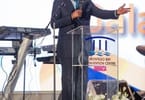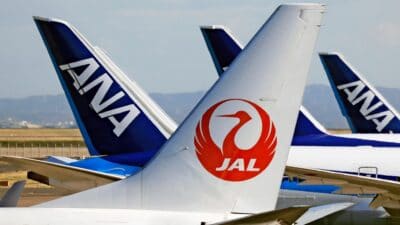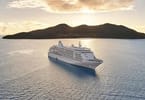BANGKOK, Thailand (eTN) – With Thai Airways opening on February 15th the Bangkok-Samui route, is Bangkok Airways monopoly finally challenged? Just on the surface. Bangkok Airways strategy remains the same: secure lucrative routes and not allow competition to come or if so… at a high price. Little is poised to change until full deregulation in ASEAN skies by 2013.
After a decade of waiting, Thai Airways will finally open a new domestic destination in a week time. Next Friday, Thailand’s national carrier will fly twice a day with a Boeing 737-400 to Samui Island, breaking Bangkok Airways monopoly on this route. Thailand’s Department of Civil Aviation finally gave its green light to allow four more flights per day and cleared landing authorization for Boeing 737-400 and Airbus A319 on the airport. In another country, the arrival of a second airline on a same route would certainly generate competition. In Thailand, things tend to be more complicated.
Samui’s success has been so far shaped by Bangkok Airways, which opened the island’s airport in 1989 and helped to turn this little-known paradise into a fashionable retreat. In 2006, over a million visitors came to the island –close to 900,000 being foreigners. There are about 298 hotels with 7,800 rooms and more are due to come.
Facing competition in its core market, Bangkok Airways reaction has been so far relatively relaxed. It would be difficult anyway to try to clash with the national carrier, as it would appear as clashing with the Thai Government itself. And Bangkok Airways still conserve the entire monopoly for the ground services at the airport. The airport built entirely by Bangkok Airways, is dubbed to be one of the most expensive in Thailand with charges equal at least to the ones asked at Bangkok Suvarnabhumi airport. “We have to fetch a bill for ground services up by 20 percent to 30 percent when compared to other Thai airports,” explained Pandit Chanapai, vice president Marketing and Sales of Thai Airways.
According to Thailand’s DCA website, a Boeing 737-400 operating in a standard version with a maximum takeoff weight of 62.8 tons would be charged in Surat Thani baht 5,466 for a landing and baht 6,280 in Samui.
Built by Bangkok Airways and managed until recently by the airline, Samui airport has been transferred to the Samui Airport Property Fund, partially owned by Bangkok Airways. Of course, the high quality of service is Samui airport’s main asset- especially when compared to Surat Thani airport. However, over the last ten years, high fares to Koh Samui by Bangkok Airways turned the destination into a “Western tourism ghetto” pushing prices up in the hotel and service industry. Domestic travelers in Samui tumbled to levels unseen in other sea resort destinations. According to official statistics from the Tourism Authority of Thailand, Samui island’s domestic visitors represented in 2006 only 15.36 percent of all arrivals; in Phuket, domestic visitors still make up to 35.9 percent of all arrivals and even 45.7 percent in Krabi.
“It is time to make Samui ‘reachable’ for Thai people,” added Chanapai. Thai Airways plans to offer special fares all year around. A current promotion at Bht 6,310 until March 15th is likely to be re-conducted in the future. The airline targets a cabin factor of 75-80 percent on the new route with 70 percent of the traffic coming from transfer passengers. “We expect to carry between 12,000 and 14,000 passengers per month,” predicted Chanapai.
Even if Bangkok Airways sees its market share slightly eroded by Thai Airways – the national carrier hopes even to add a third daily flight in a near future-, Bangkok Airways will still take comfort from the rest of its network. Bangkok-Siem Reap -served in monopoly since the early nineties- is probably the most lucrative in Southeast Asia with the cheapest fare sold at baht 9,800 (US$305 excluding taxes for a 50 minutes flight).
So far, Bangkok Airways has been successful to block any other carrier to move into the infamous route. In Luang Prabang, the airline has been doing pretty well: it is the only one to offer up to three daily non-stop flights to Bangkok with a return ticket being sold for Baht 9,500 (US$297). High fares to these destinations are justified by Bangkok Airways’ President, Prasert Prasartthong-Osoth, by the fact that the airline took the risk to pioneer those routes.
It is true to a certain point. It was courageous for Bangkok Airways to start flying to Siem Reap some 12 years ago in the midst of Cambodia’s political turmoil. However today, with Cambodia being a completely normal travel destination, it is hard to believe that flying to Angkor Wat, one of the world’s most famous heritage sites, is still a financial challenge and justify to keep a monopoly on the Bangkok-Siem Reap route. Nothing will change until the complete deregulation of ASEAN skies by 2013. Finally, it is only another five years ahead.






















